Welcome to the Janison Insights help portal
Author Tests
In the Insights authoring area, you create your tests. The system is organised into entities, allowing you to easily structure your tests into specific topics. This design streamlines test management, providing a user-friendly experience as you develop and organise your assessments.
This is how the entities fit together. In this example there is one discipline and two modules. Module one has two tests and module 2 has just one. If you scroll down the page, we’ve applied this structure to a real life scenario.
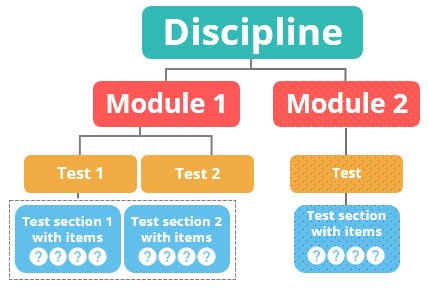
This is an example of how you could use the structure to organise science topics.
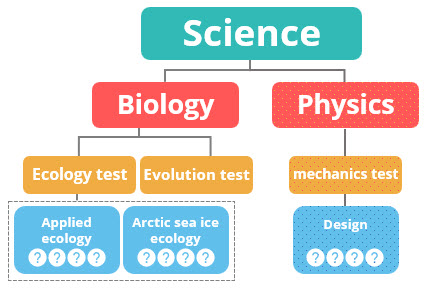
These entities are created and managed by selecting the relevant item from the Author menu.
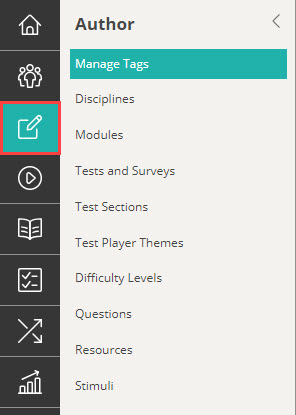
You can view and create disciplines from the Discipline menu item.
To create a new discipline, select Author > Disciplines and then Add Discipline.

The New Discipline screen displays.
Enter the Description and Identifier. In this example we’ve used Science.
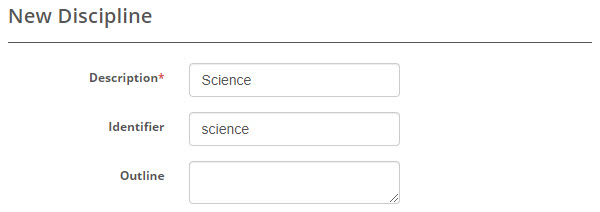
The next step is to optionally set the module workflow defaults.
Workflows allow for quality control of test entities. The system gives the authoring team the option to send their items through a set of workflow approval stages before publishing the test. You can read more about workflows in our documents on quality control and workflows. Setting the workflows at a discipline level will set these workflows as the default when new modules are created in this discipline. Authors can however change these workflows at the module level if required.
Setting workflows at the discipline level is optional, if required, select the workflows for the required entities.
You have two options available for the above workflows if set:
Items follow Test Sections – This sets the defaults for newly created modules. When enabled, workflow transitions performed on the test section are applied to all the items in that section. For example, if the test section is approved then all of the items will be approved. This does require that the same workflow is used for both.
Test Sections Follow Tests – This sets the defaults for newly created modules. When enabled, workflow transitions performed on the test are applied to all the test sections in that test. For example, if the test is approved then all of the test sections will be approved. This does require that the same workflow is used for both.
Select Save Discipline.

Once created, you have the option to add Custom attribute sets and Psychometric data sets to the discipline. You can read more about this topic in our document on Custom attributes.
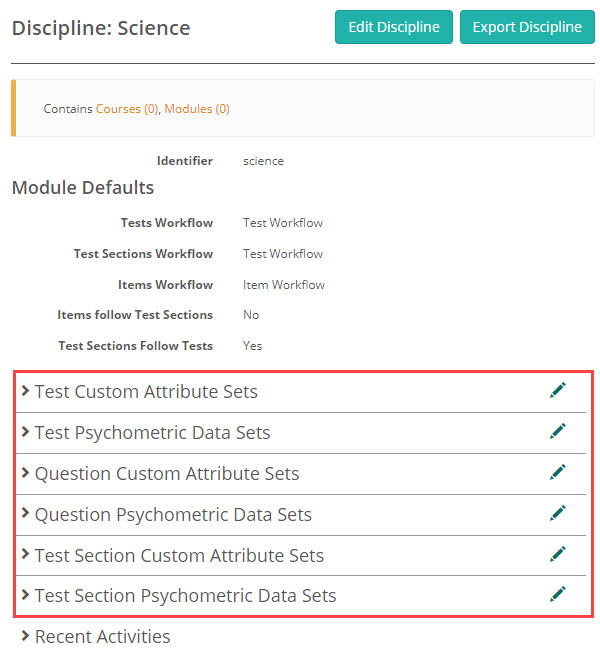
You can view and create disciplines from the Modules menu item.
To create a new module, select Author > Modules and then Add Module from the Actions dropdown.
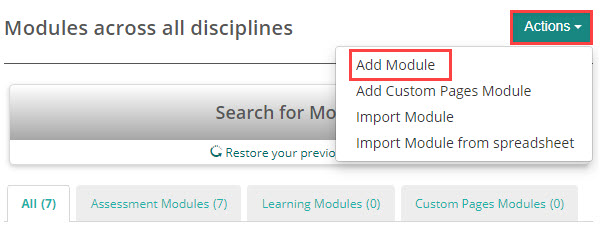
The New Module screen displays. In this example, we’ve selected the Science discipline we created above, and called our module Biology.
If you select Module is open for searching, when adding items to a test in other modules (but in the same discipline), items in this module will display in search results.
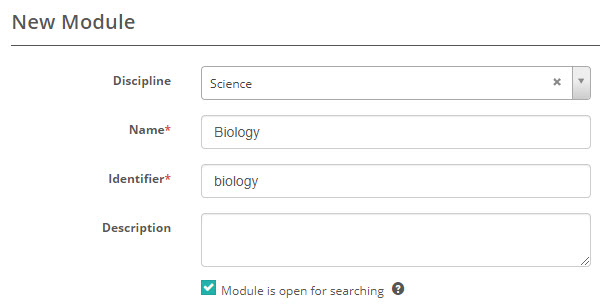
Note that the workflows and related settings are set to the options we selected at the discipline level but can be edited if required.

Once saved, the module details screen displays. Additional sections are available for configuration, but these may differ depending on the configuration of your site.

Blueprint settings allow you to specify a set of tag types that can be used as dimensions for building test blueprints. You can read more about this topic in our document on test blueprints.
1300 857 687 (Australia)
+61 2 6652 9850 (International)
ACN 091 302 975
ABN 35 081 897 494
© 2024 Janison
Janison acknowledges the traditional owners of the land on which we work and meet. We acknowledge the continuous care of the land, animals and waterways. We pay our respects to Elders past, present and emerging.